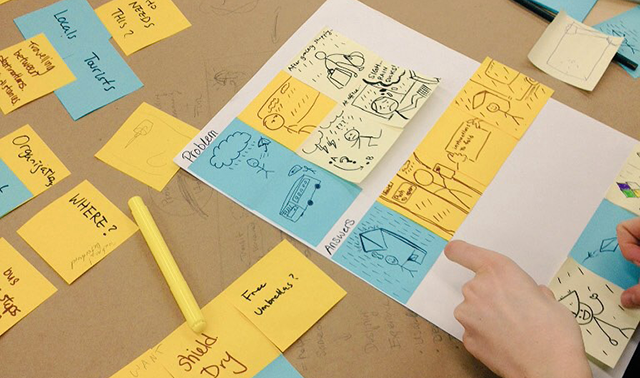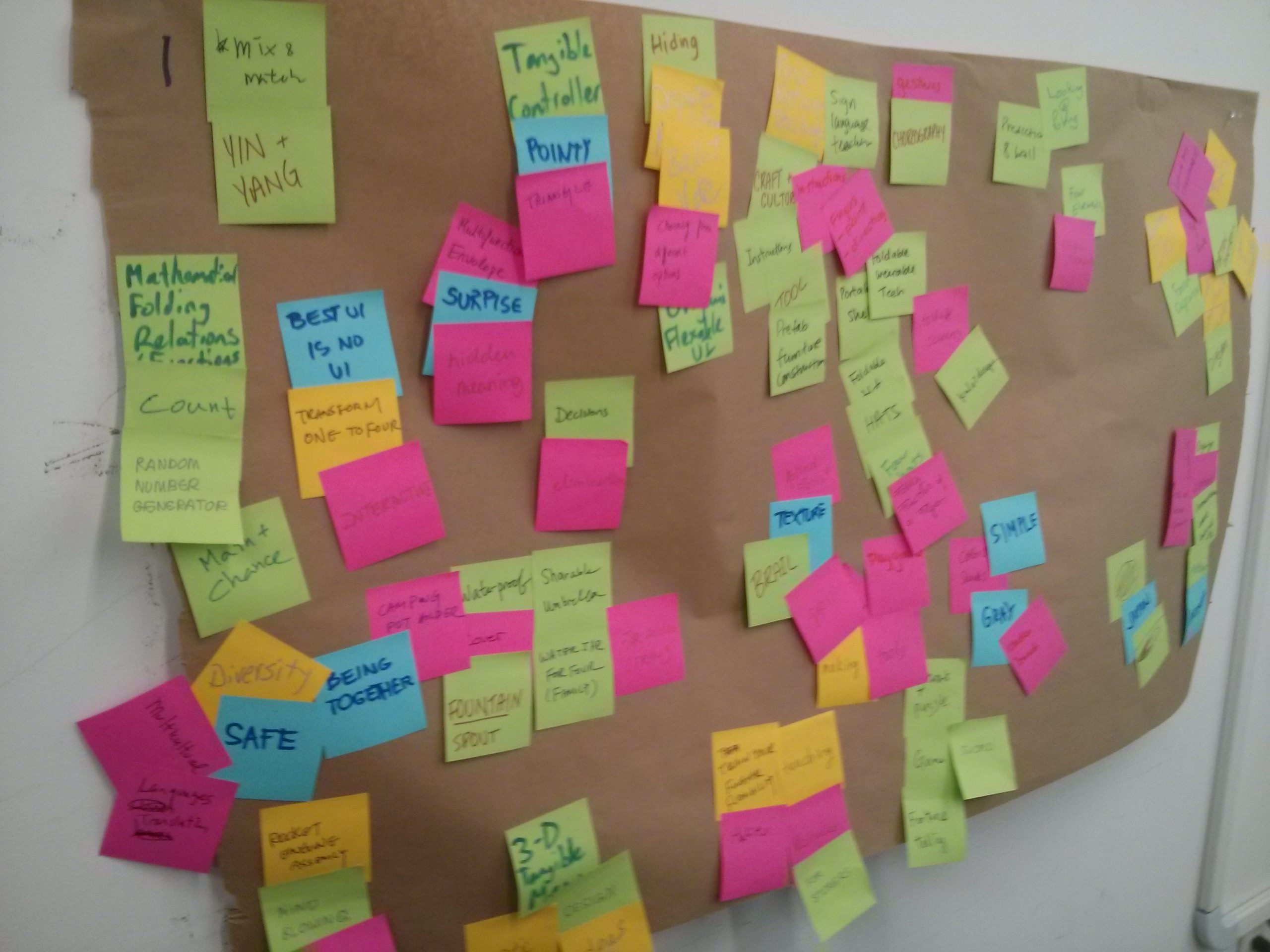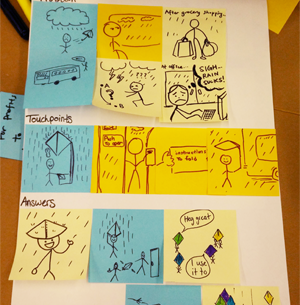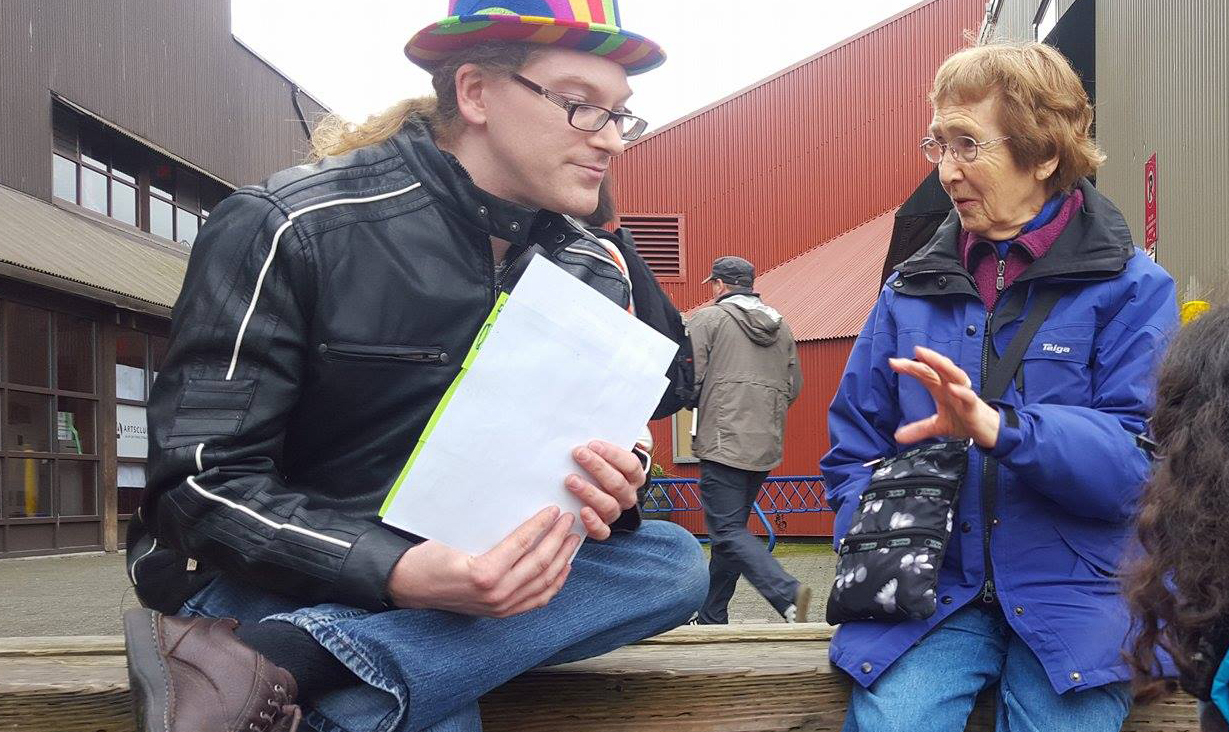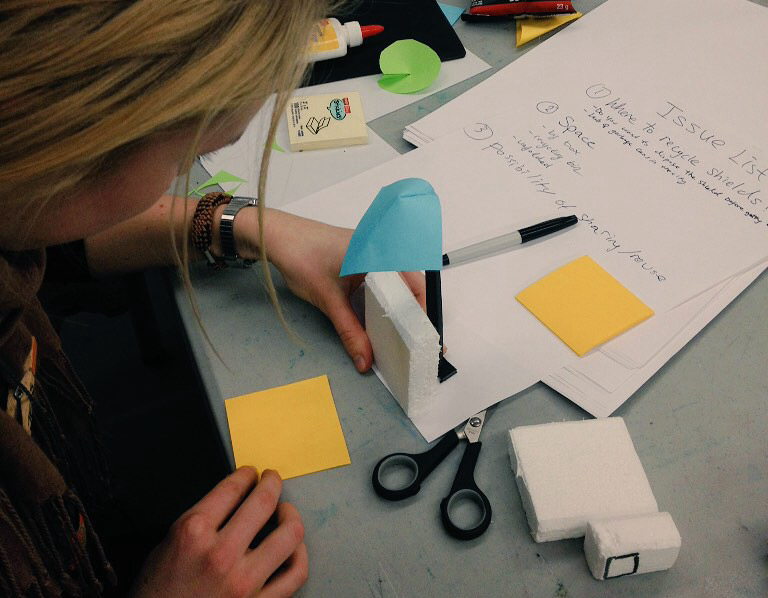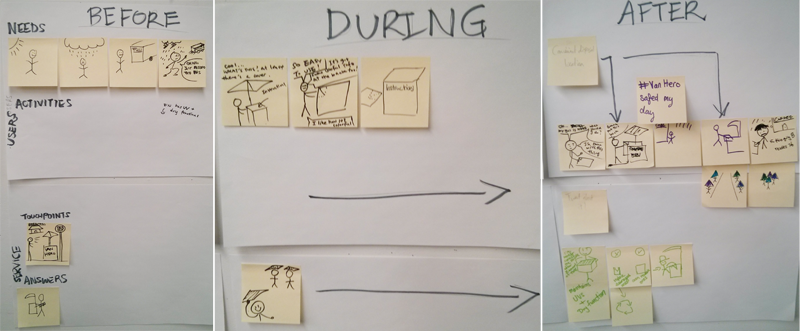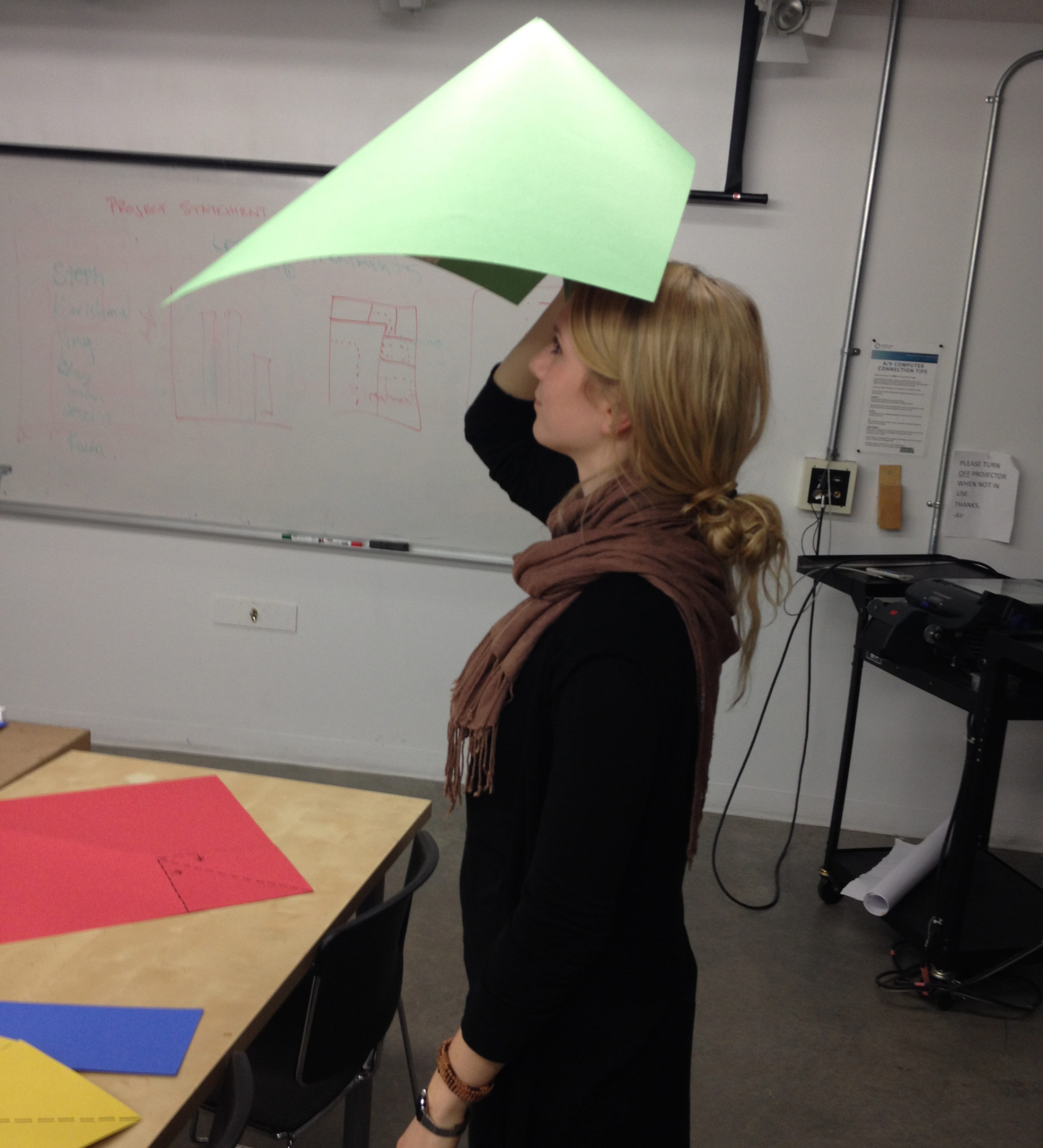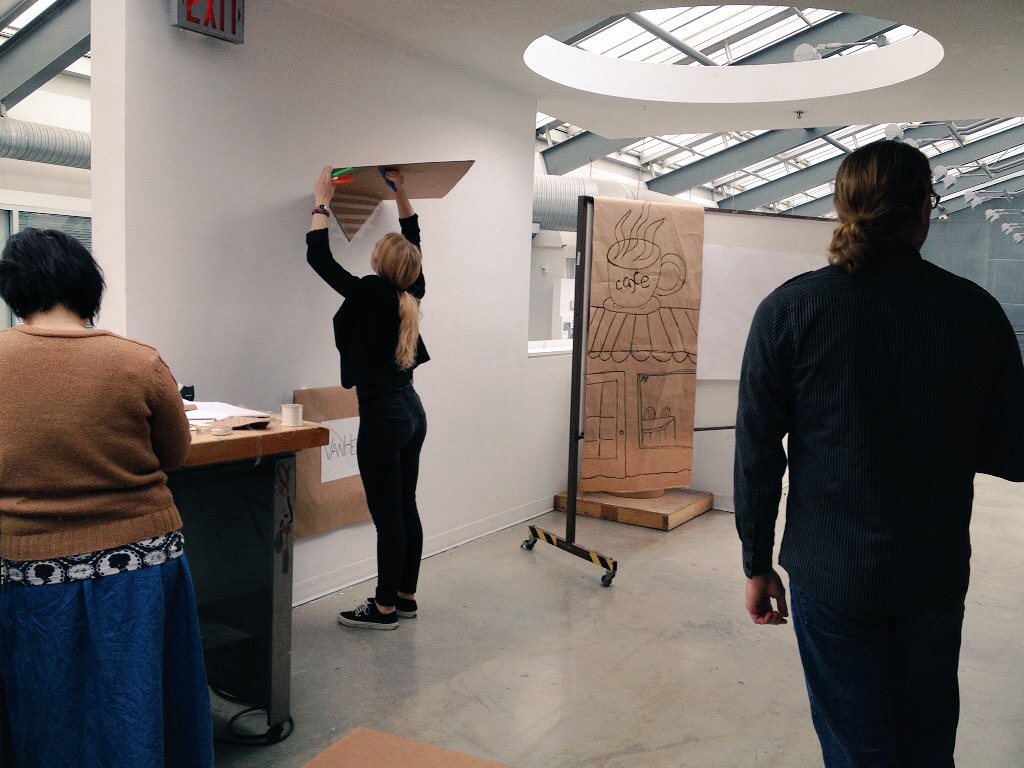VanHero Rainshields

A reusable, conveniently-located weather protection service to help travellers in Vancouver keep themselves safe from the rain
Design Process
The brainstorming process began with rapid ideation sessions in which each team created a board of ideas written on post-it notes, then moved to another team’s board twice, to expand the ideation beyond just one team’s members. By the end of the evening, we were expected to have fleshed out several different ideas, aiming to be able to start initial prototyping early the next day.
Our team gravitated towards one post-it that said “shareable umbrella” on it. We came up with a central theme of “weather protection on the go” and ran with several variations on this, including the original idea, portable shelters made from umbrella-like structures, and an Airbnb-like camping equipment sharing service. Early on the Saturday, we defined our main concept: a disposable rain shield made of recycled material that is available at major points of transit throughout the city. One team member quickly folded a post-it note into an umbrella-like form, which inspired our product’s form, and we put together a rough service journey storyboard for the idea (as well as our moveable rain protection structure, as a backup), to show to people in the field.
We wrote down key questions to gain insight with, and brought them and the service journey to the field. The results were very promising: most people we interviewed were very interested in the concept, even ones who regularly carried their own umbrellas (showing that the service may be disruptive, appealing as an alternative for those who prepare for the weather). To ensure we were not biasing our interviewees because one idea was more developed and better illustrated, we changed the order we introduced our two ideas randomly, but still got the same results.
Our first prototype and presentation was of a small-scale model of the full kiosk where the shields would be housed, and a scenario we acted out to run through the logistics of the service. After some feedback from our peers, we began to re-think some of the service’s specifics, and altered our business model canvas to check if the changes made sense.
By focusing on defining a service journey and asking more key questions as they came up, we discovered that making the rain shield disposable would be a problem, since at each point where people arrive en masse at a destination (which any of the disposal locations would be), there would be a huge influx of disposal, and need for new shields once people leave the location later on (imagine a movie theatre, where all the people going there for a show arrive and leave near the same time – this would be difficult to manage). To address this, we decided to make the rain shields re-usable, and the kiosks able to dry then out to quickly make them usable again. The revised service journey helped us work out other touchpoints that we had not thought of yet, so it was essential to do this prior to starting our final prototyping phase.
The full-size prototype allowed us to get a clear view of the dimensions, positioning and physical form of the kiosk that holds the rain shields, as well as the rain shields themselves. The final prototype was used to set up our scenario video and final presentation for the event.
For the final presentation, we had to keep to the theme throughout the event of, essentially, “show, don’t tell”, which translates to a scenario video in which, rather than describing our concept and verbally going over details, we used more designerly skills to represent it: acting out use cases, prototyping the material needs for the video, and showing the audience how we envision the service working, rather than saying a single word about it.
Results:
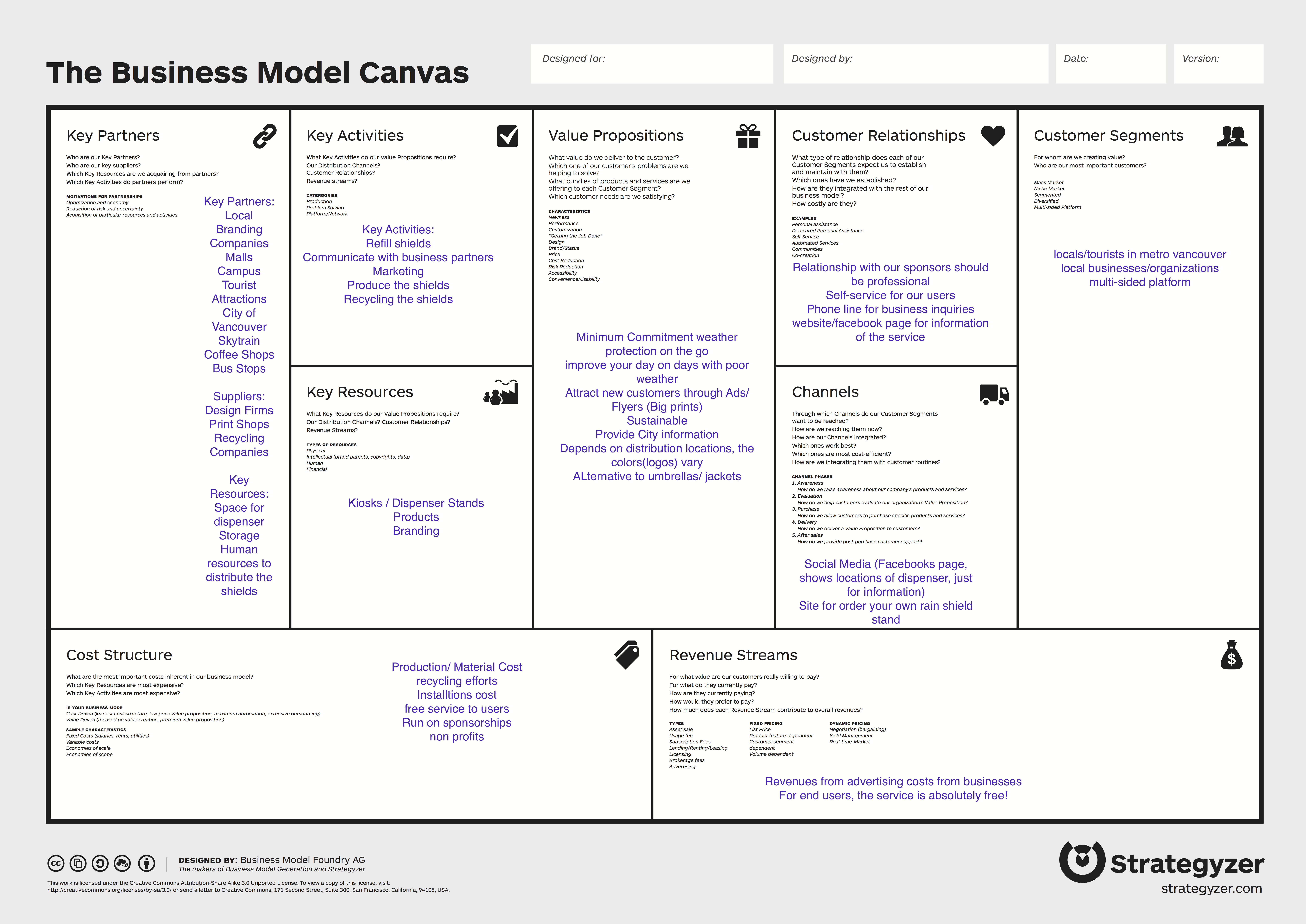
- 2015 Vancouver Global Service Design Jam
- February 2015
